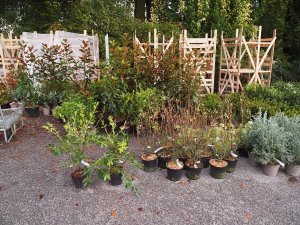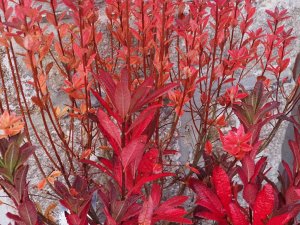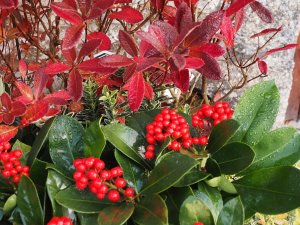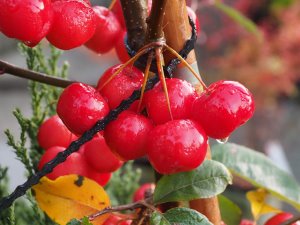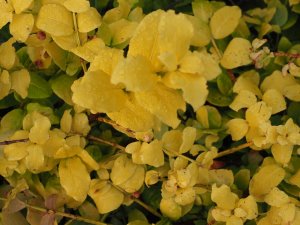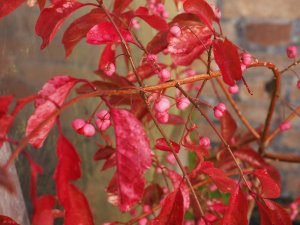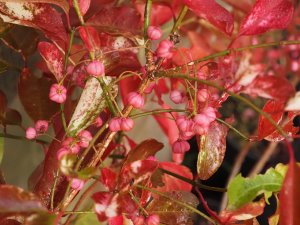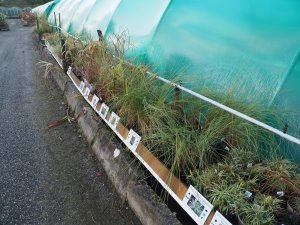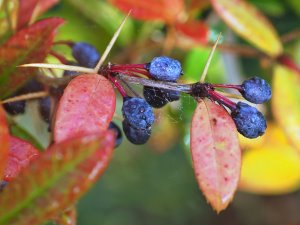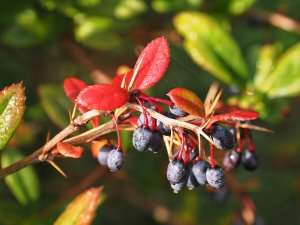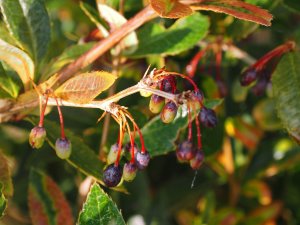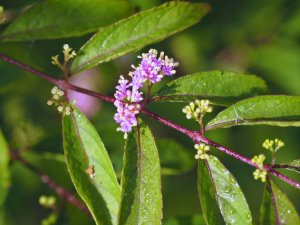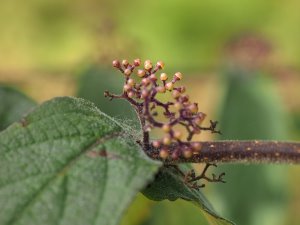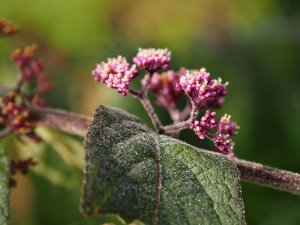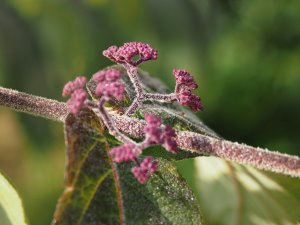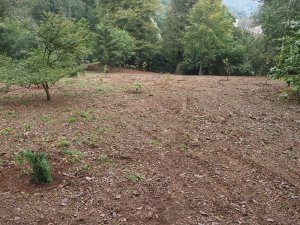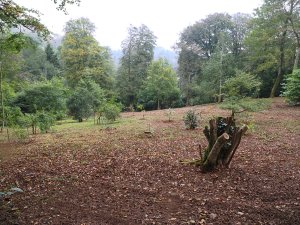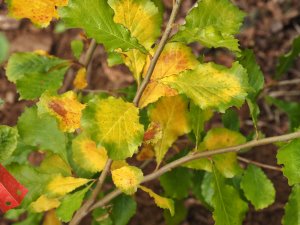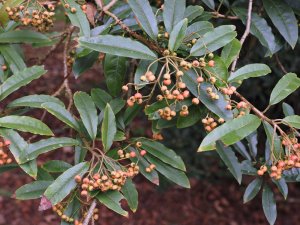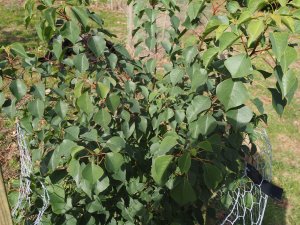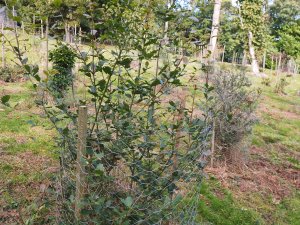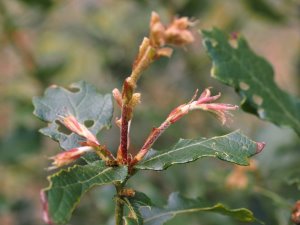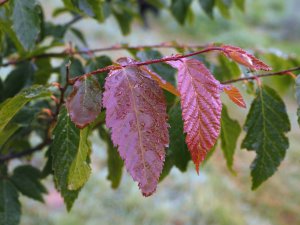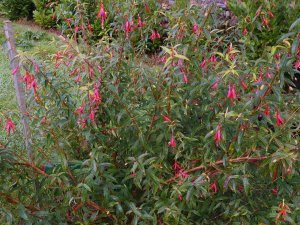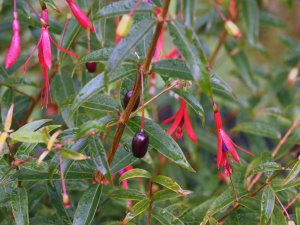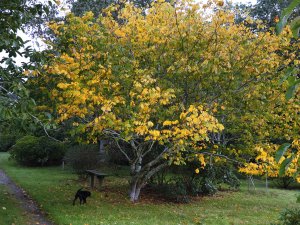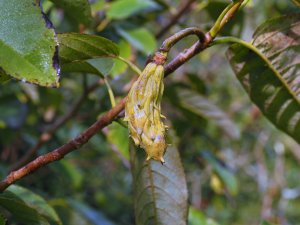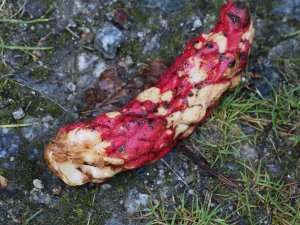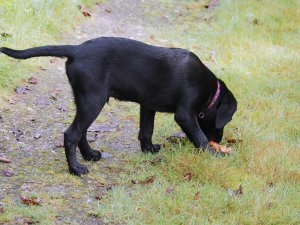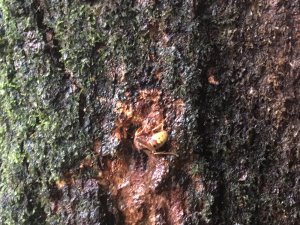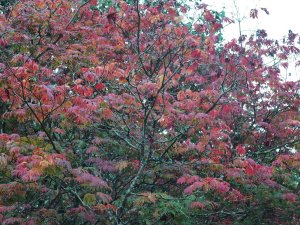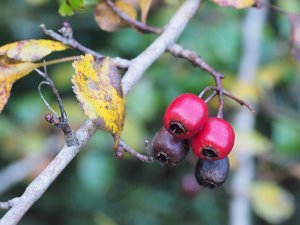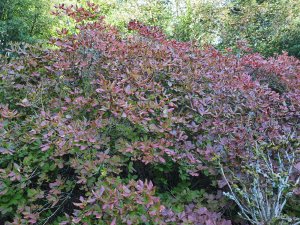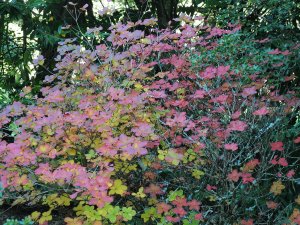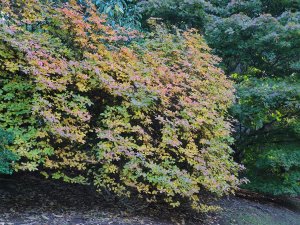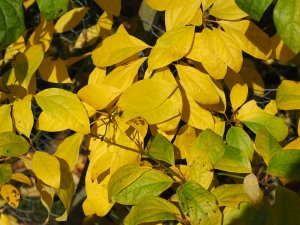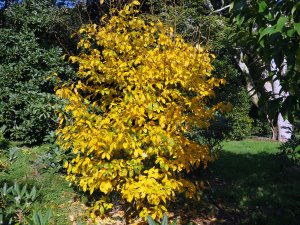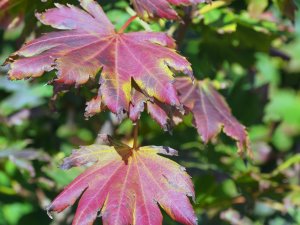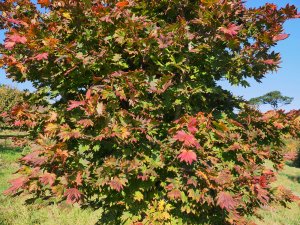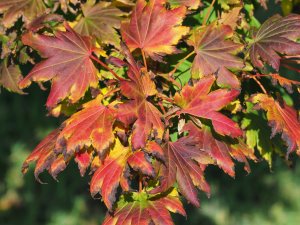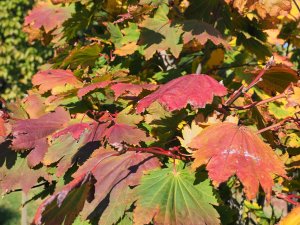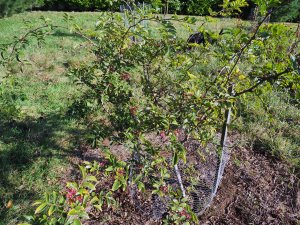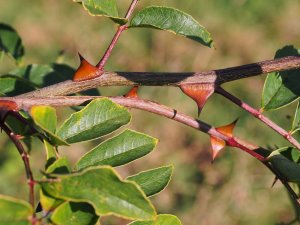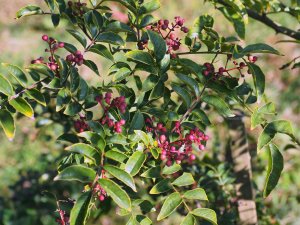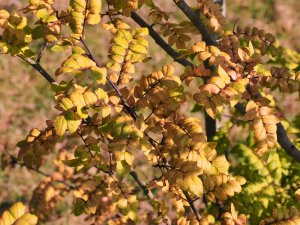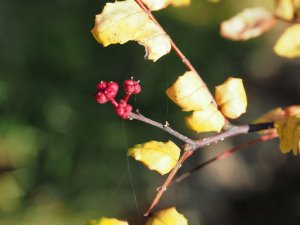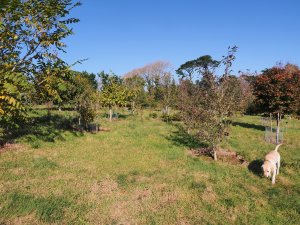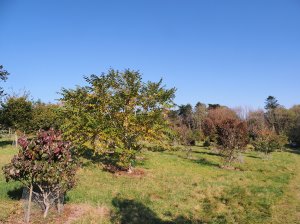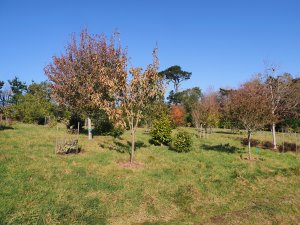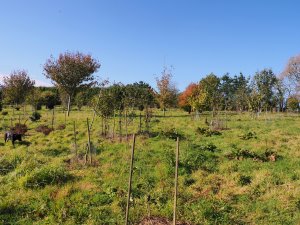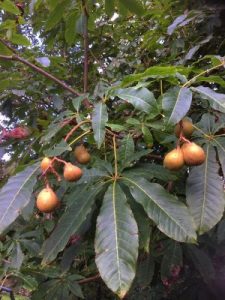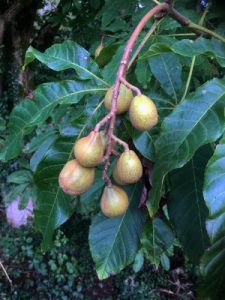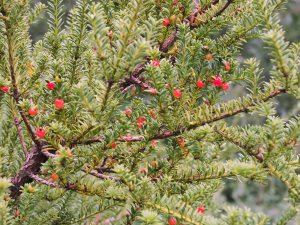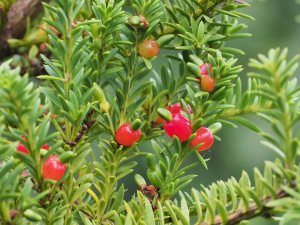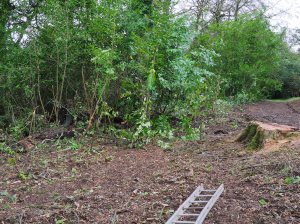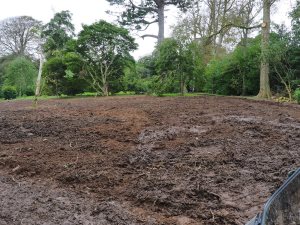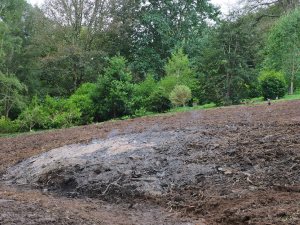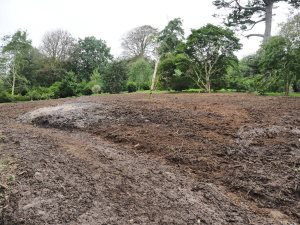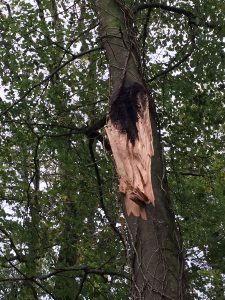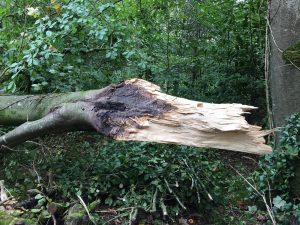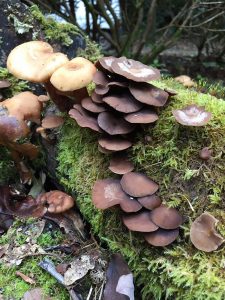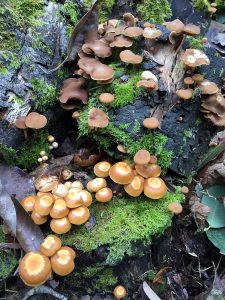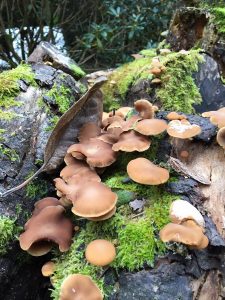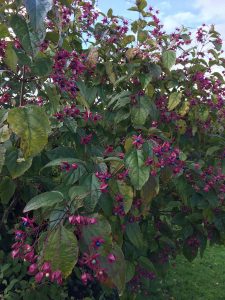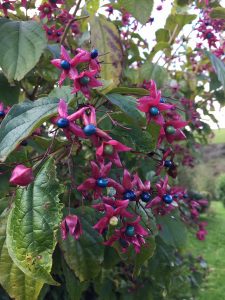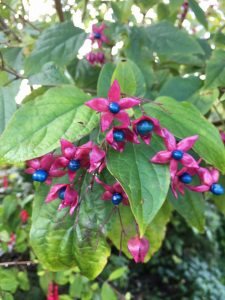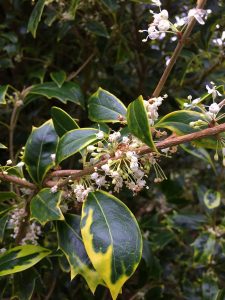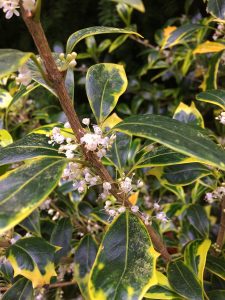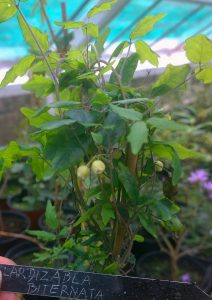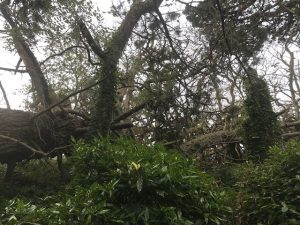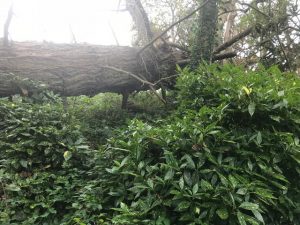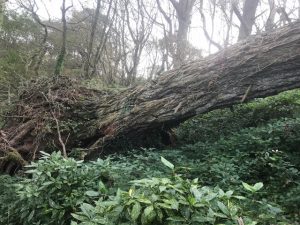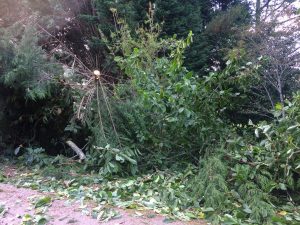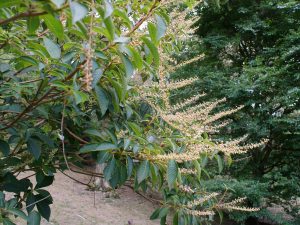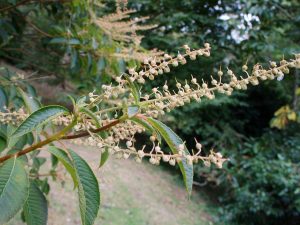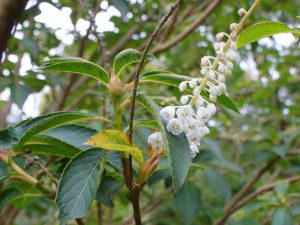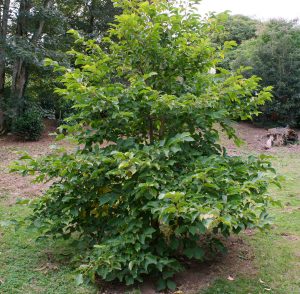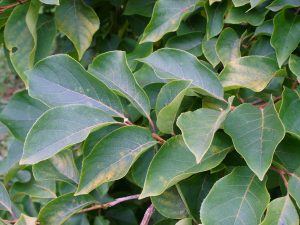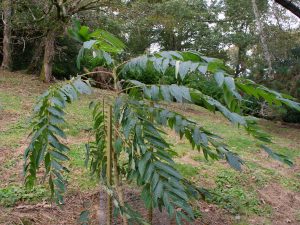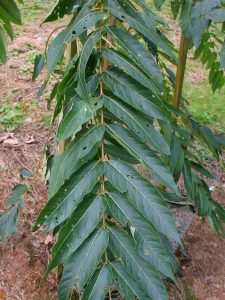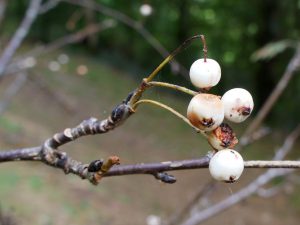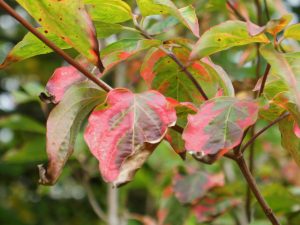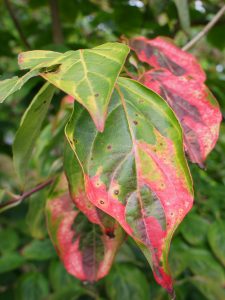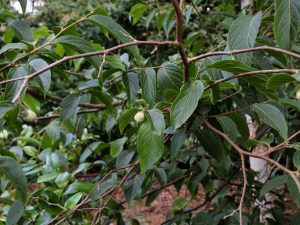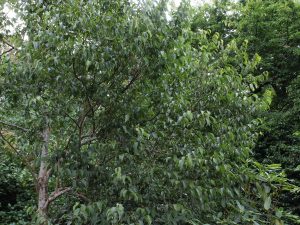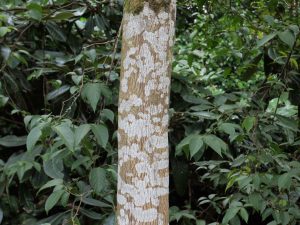2024 – CHW
To Burncoose for some pre-filming with the RHS for our Master Grower exhibit at Hampton Court next year which Cressy and Phil Knuckey are staging.
Camellia ‘Yuletide’ greets me in the car park.
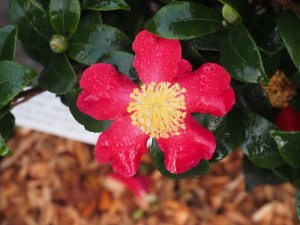
The October heatwave continues and we start out on our autumn planting.Berberis xanthoclada (NJM 11007) covered in juicy black fruits in the Isla Rose.
2022 – CHW
Leslie Baker told me he had his first flower on his Camellia x williamsii ‘November Pink’ so I visited our original tree (as it now is) today in the Main Quarry. Nothing doing here yet and no hint of colour.
Sapium sebiferum hated last winter and looked sickly in the spring but has enjoyed the heat and recovered well.
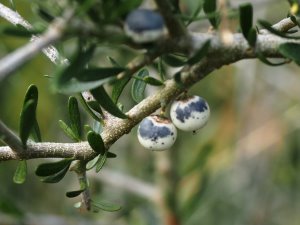
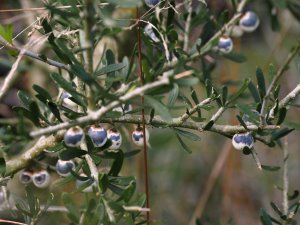
New growth on Carpinus caroliniana.
A hornet drinking the sap from a fissure in an old oak tree. As it turns colder the wasps are getting dopey and one latched onto one of the dogs stinging it all the way back to breakfast.
Three very different autumn colour themes from reddish to pinkish to yellow in this species.
Lindera umbellata with a stunning show.
2019 – CHW
The youngish Aesculus wilsonii at the entrance to Old Park are still laden with conkers but they remain unripe.
2018 – CHW
The weekend gales did not actually cause that much damage but a beech tree above Crinodendron Hedge split in half. Whenever you get two leaders in a young tree there is always a risk of such splits where the water gets between the two leaders. This is clearly evident in the two photographs here.
2017 – CHW
Asia has very cleverly spotted that what is labelled Lardizabala biternata in the greenhouse does not conform with a Google search. Although it does look quite similar until it is actually in flower. What we have I think, as Asia has correctly identified, is something called Boquila trifoliolata. I had not realised we had a picture of the boquila actually in flower but here it is. I cannot remember who gave us this plant originally, which we had been propagating for the last three years. Two have been planted out this spring so we will have to check if they are hardy enough to survive!
Still carrying on in Bond Street.Clethra delavayi, planted in 2008, is laden with ripening seed. The plant by Higher Quarry Nursery died this year after only about 20 years of over-seeding. One flower remains out hidden in the small tree which this plant now is.
2015 – CHW
Double day let shoot starts today but a quick early sprint to the Rookery finds yet another magnolia with a few shitty secondary flowers. This time Magnolia ‘Apollo’ hidden away beside three rather thriving young Michelia doltsopas which are well on their way.
A good well established Styrax hookeri nearby too. I fear that I made a terrible cock up in the early summer when I called these Styrax hemsleyanus in error. Quite a few times too but no one called me out. The bark colouration is very distinct. It is only when you get together with someone who really knows like Tom Hudson that you can start to correct your own howlers.
I am pretty certain too now that what I photographed as Osmanthus yunnanensis last week was wrong too. Another plant seen today has absolutely no spines on its leaves and what I saw was probably Osmanthus armatus or Osmanthus x burkwoodii. If the former it should flower soon. Another young Osmanthus yunnanensis has been trimmed by deer and is nearly dead.Perhaps, over the weekend, I will photograph all the seven youngish styrax species with leaf and fruit above the Crinodendron Hedge or perhaps all the other new liquidamber varieties planted along Sinogrande Walk. The styrax you will say are rather dull but not to me!
I actually went to the Rookery to look again at the possibility of felling the laurel and four to six over mature beeches castle side of the nursery bed to make a big new planting area. The last surviving mature elm in the garden is hidden away here and it is a cold spot. Perhaps more crucially a big new clearing here would encourage the pheasants to fly the wrong way out of the Rookery. Needs more thought but not a huge job to achieve.
1992 – FJW
First proper frost last night – a good year for Ilex seed.
1987 – FJW
During night major 15/16 great storm hit London and Kent – Kew very badly damaged and Royal Parks.
1927 – JCW
Not so many rhodo’s as in 1917. Hoheria on the wall is good, the hydrangeas in the Drive remarkable, some Maddeni x and a Decorum are in the back.
1917 – JCW
Much as in 1916, we have corn out now, Clematis panniculata is very good indeed.
1916 – JCW
No frost. Solanum, lapagerias, cyclamen, hydrangeas all useful. Rhodo’s neriiflorum, decorum, scintillans, 10333, fastigiatum, raniosisimums, lepidotum and racemosum all show bits of flower, and primulinum.
1906 – JCW
No frost and begonia etc etc V.G. Sweet peas just over.
1905 – JCW
First hard and white frost knocked out the gunnera. No rain for weeks and no daffs but polyanthus in sight. Roses good, all fuchsias and soft stuff cut out.
1901 – JCW
A few daffs besides Polyanthus coming through the ground, mainly maximus. I picked a lot of yellow Polyanthus Primrose. D phaloenopsis is at its best. I saw the first Iris stylosa.




